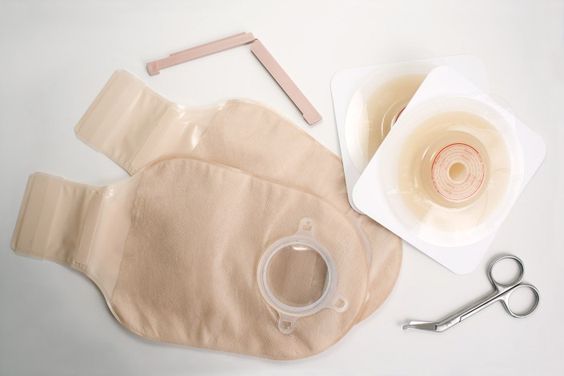Intestinal necrosis is a rare but serious complication that usually occurs in patients who have undergone colostomy surgery. It results from insufficient or complete interruption of blood supply to the colostomy site, which can lead to tissue death, infection, and other health problems. Ischemic necrosis of enterostomy is the most serious early complication after a stoma operation, and it usually occurs within 24-48 hours after the operation. According to statistics, the incidence of enterostomy necrosis is 2.3%-17%.
Ischemia of the enterostomy is usually caused by incorrect surgical techniques, resulting in poor blood supply to the stoma, damage to the colonic arteries during the operation, too small opening of the abdominal wall of the enterostomy, or too tight suturing, severe arteriosclerosis, excessive intestinal obstruction, etc. Long-term intestinal swelling leads to long-term hypoxia of the intestinal wall, tight mesentery of the enterostomy, etc.
Acute (early) enterostomy mucosal necrosis manifests as a partial or complete purplish appearance of the enterostomy. With timely and appropriate treatment, most of the purplish enterostomy tissue may return to normal; but if there is no improvement, it will turn black, and finally lead to mucosal necrosis; if intestinal necrosis is not treated correctly and in a timely manner, excrement can cause peritonitis and abdominal infection; severe stoma necrosis, the stoma mucosa is all black, and stoma reconstruction surgery is required immediately.
Chronic (advanced) enterostomy mucosal necrosis is characterized by pale, dry enterostomy mucosa, followed by grayish-brown mucosa, and finally mucosal necrosis. However, patients who take laxatives for a long time often have colonic mucosal pigmentation, and the intestinal mucosa is dark black, which needs to be identified.
The causes of enterostomy necrosis can be various, including improper operation, postoperative infection, vascular disease, tumor, radiation therapy, etc. Symptoms of enterostomy necrosis include abdominal pain, fever, diarrhea, vomiting, abdominal swelling, etc., which may lead to a serious decline in the quality of life of the patient.
Treatment for enterostomy necrosis depends on the extent and extent of necrosis. Mild cases of enterostomy necrosis can be treated with oral antibiotics and topical treatments. For severe enterostomy necrosis, surgical treatment may be required, including repairing or re-establishing bowel passage.
In order to prevent the occurrence of enterostomy necrosis, doctors and patients need to pay attention to the following points:
1. Before performing colostomy surgery, doctors need to evaluate the patient's health status, including blood circulation, intestinal health, etc., in order to reduce the risk of surgery as much as possible.
2. After the operation, it is necessary to closely monitor the patient's condition, including body temperature, abdominal pain, defecation, etc., to detect and deal with any abnormalities in time.
3. Patients need to follow the doctor's advice, maintain good eating habits, and avoid excessive exertion and excessive activities to reduce intestinal pressure and irritation.
Intestinal necrosis is a serious complication that requires joint efforts of doctors and patients to prevent and treat it. By strengthening preoperative evaluation and postoperative monitoring, and following the doctor's advice, the incidence of enterostomy necrosis can be reduced as much as possible and the quality of life of patients can be improved.
For more information on Innomed®ostomy pouch, Refer to the Previous Articles. If you have customized needs, you are welcome to contact us; You Wholeheartedly. At longterm medical, we transform this data by Innovating and Developing Products that Make Life Life easier for those who need loving care.
Editor: kiki Jia
Date: August 21, 2023

 English
English عربى
عربى Español
Español русский
русский 中文简体
中文简体








